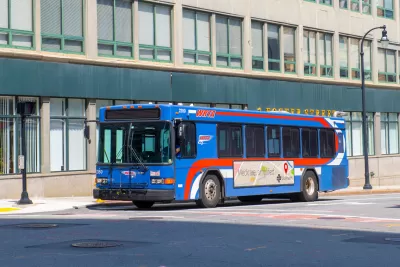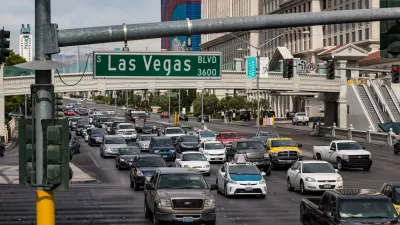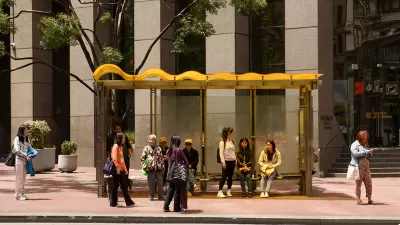Ridership recovery is an uphill battle for transit agencies across the nation, but some metro areas have made progress.

Public transit ridership is still lagging behind pre-pandemic levels in most major U.S. metro areas, according to the American Public Transportation Association’s third-quarter public transportation ridership report. Axios staffers Alex Fitzpatrick and Kavya Beheraj compared the data to 2019 numbers and highlighted key trends.
At a national level, ridership currently stands at 77 percent of pre-pandemic levels. Drilling down to the state level, just nine of around 100 U.S. metro areas with more than 500,000 people had September 2023 public transit ridership at or above 100 percent of September 2019; of those nine, Poughkeepsie, New York (150.3 percent); Worcester, Massachusetts (141percent) and Youngstown, Ohio (130 percent) had the highest.
Fitzpatrick and Beheraj attribute a recent rise in ridership rates for some of the countries biggest transit systems to employers requiring workers to return to the office. New York subway ridership is up 16 percent, Chicago’s L is up 14 percent, and San Francisco’s Muni Metro light rail network has risen 43 percent.
In addition to return to the office, the authors say cities have been experimenting with a variety of tactics to boost ridership, including reduced or waived fares, new and adjusted routes based on people’s post-pandemic travel patterns, and investments in infrastructure.
FULL STORY: Where public transit is recovering — and where it's not

Alabama: Trump Terminates Settlements for Black Communities Harmed By Raw Sewage
Trump deemed the landmark civil rights agreement “illegal DEI and environmental justice policy.”

Planetizen Federal Action Tracker
A weekly monitor of how Trump’s orders and actions are impacting planners and planning in America.

The 120 Year Old Tiny Home Villages That Sheltered San Francisco’s Earthquake Refugees
More than a century ago, San Francisco mobilized to house thousands of residents displaced by the 1906 earthquake. Could their strategy offer a model for the present?

Opinion: California’s SB 79 Would Improve Housing Affordability and Transit Access
A proposed bill would legalize transit-oriented development statewide.

Record Temperatures Prompt Push for Environmental Justice Bills
Nevada legislators are proposing laws that would mandate heat mitigation measures to protect residents from the impacts of extreme heat.

Downtown Pittsburgh Set to Gain 1,300 New Housing Units
Pittsburgh’s office buildings, many of which date back to the early 20th century, are prime candidates for conversion to housing.
Urban Design for Planners 1: Software Tools
This six-course series explores essential urban design concepts using open source software and equips planners with the tools they need to participate fully in the urban design process.
Planning for Universal Design
Learn the tools for implementing Universal Design in planning regulations.
Clanton & Associates, Inc.
Jessamine County Fiscal Court
Institute for Housing and Urban Development Studies (IHS)
City of Grandview
Harvard GSD Executive Education
Toledo-Lucas County Plan Commissions
Salt Lake City
NYU Wagner Graduate School of Public Service





























